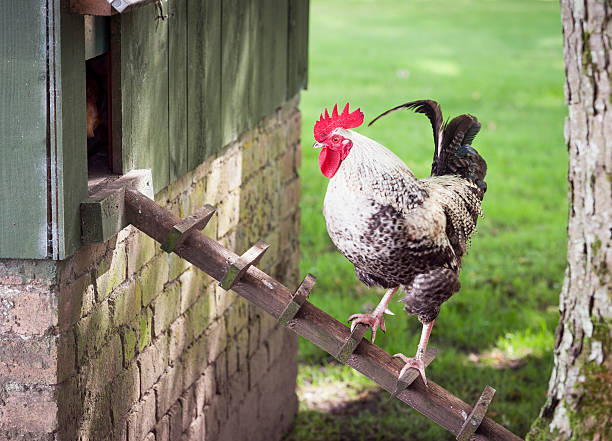
Raising chickens can be a rewarding venture, whether for eggs, meat, or both. However, to ensure your chickens remain healthy, productive, and safe from predators, you need a well-designed chicken shed. Below are essential tips to help you build an efficient and comfortable space for your flock.
1. Choose the Right Location
The location of your chicken shed plays a significant role in the health and productivity of your birds.
- Pick a well-drained area to avoid waterlogging and damp conditions.
- Ensure the site gets adequate sunlight, especially in the morning, to keep the coop dry and warm.
- Position the shed in a place with good airflow but protected from strong winds.
2. Proper Ventilation is Key
Good airflow is crucial to prevent moisture buildup, ammonia accumulation, and respiratory diseases.
- Install windows, vents, or wire mesh panels to allow fresh air to circulate.
- Ensure openings are positioned to let in air without exposing the birds to direct drafts.
3. Provide Enough Space
Overcrowding can lead to stress, disease, and aggressive behavior among chickens.
- Each chicken should have at least 2-3 square feet of space inside the coop.
- If you include a run, allow at least 8-10 square feet per bird for outdoor movement.
4. Use Durable and Safe Materials
A strong and well-built chicken shed ensures longevity and safety.
- Use treated wood or metal for the structure to withstand weather conditions.
- For flooring, concrete or raised wooden floors help prevent moisture buildup and protect against predators like rats.
- Use hardware cloth (not chicken wire) for windows and ventilation, as it is more predator-proof.
5. Ensure Easy Cleaning and Maintenance
A clean chicken shed reduces disease risks and keeps birds comfortable.
- Design the shed with removable trays for easy manure collection.
- Use deep litter systems (wood shavings, straw) that can be changed periodically.
- Include a large door or hatch to allow easy access for cleaning.
6. Install Roosting Perches and Nesting Boxes
Chickens naturally prefer to roost at night and need nesting boxes for egg-laying.
- Roosting perches should be at least 2 feet off the ground, providing about 8-10 inches of space per bird.
- Nesting boxes should be 12x12 inches and placed in a quiet, dimly lit corner of the shed. Provide one box for every 3-4 hens.
7. Protect Against Predators
Predator attacks are a major concern for backyard and farm-raised chickens.
- Bury wire mesh at least 12 inches underground around the shed to prevent digging predators.
- Lock the coop at night using secure latches.
- Elevate the shed slightly to deter rodents and snakes.
8. Provide a Reliable Water and Feeding System
Consistent access to clean food and water is essential.
- Use hanging feeders to prevent waste and contamination.
- nstall automatic or nipple waterers to keep water clean and fresh.
- Keep feed and water in a covered area to prevent spoilage from rain.
9. Consider Weather Protection
Chickens are sensitive to extreme temperatures.
- For hot climates, install shade structures, use light-colored roofing, and ensure good ventilation.
- For cold climates, insulate the walls, seal gaps to prevent drafts, and provide extra bedding during winter.
10. Make It Expandable
As your flock grows, you might need more space.
- Design the shed with an option to extend the run or add more roosting areas.
- Plan for additional nesting boxes and feeders if needed.
Final Thoughts
A well-designed chicken shed ensures your flock stays healthy, stress-free, and productive. By following these tips, you can create a space that promotes good hygiene, prevents disease, and enhances egg and meat production. Happy chickens mean a successful poultry business or a bountiful backyard flock!
For More information on Poultry farming, Please check out below the related videos:
1. Top Five Profitable Chicken Breeds for Meat (And Why)
2. The Secrets To Succeed In Poultry Farming
3. Important Tips For Raising Laying Chicken
4. How To Launch A Sasso Chicken Business with 100 US Dollars